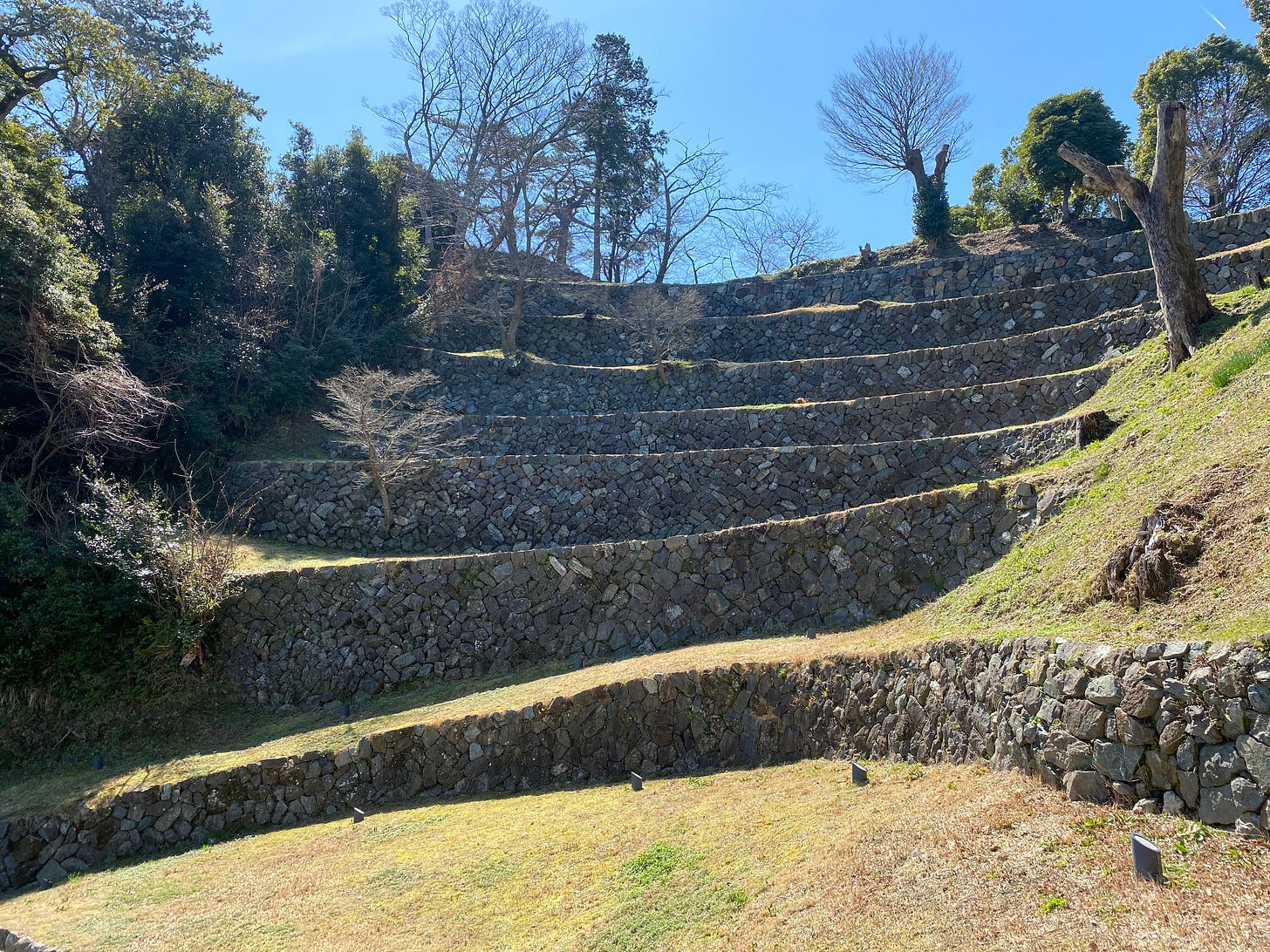Undiscovered Drawings of Toba Castle Found Amongst Rubbish
Masterpiece of Disaster History Rescued From Destruction
A hand painted map, part of a Request for Restoration submitted to the shogunate regarding Edo period storm damage to the stone walls of Toba Castle, was discovered in a pile of waste paper brought to a recycling facility in Toba City, Mie Prefecture. A worker at the facility sorting through the paper waste noted the old washi paper and elegant handwritten notes, quickly realized that it might be a valuable historical document and brought it to the Toba Local History Society, where a disaster prevention researcher happened to be visiting, and confirmed that it was the undiscovered picture he was looking for.
On July 13th, a man in his 50s who lives in Nagoya City visited Toba City Recycle Park, which accepts recyclable waste from households. He brought in a cardboard box containing stacks of historical materials, photo negatives, old pamphlets, and other items. They were being disposed of when the vacant house in Toba City where his parents lived was cleaned out.
Paid volunteer Mr. Kinoshita Fusami (72), who assisted him, said, "It was a pile of old Japanese paper. The writing was beautifully written and conveyed a sense of elegance," and decided to bring the items to the Toba Local History Society instead of throwing them away, thinking they might be valuable.
According to a catalog compiled by the Toba local history society, a total of 310 historical documents were brought in. The majority were prayers from the Meiji period that were likely recited at festivals at local shrines, fishing-related documents from the Edo to Meiji periods, such as whaling and mullet fishing, and various folk materials. About 20 historical documents regarding Toba Castle and other areas were included.
Local History Society Chairman Mr. Nomura Fumitaka speculated "The family that left the documents was probably a scribe for Toba domain during the Edo period, and a Shinto priest in the Meiji period.”
A researcher of the history of disasters at Toba Castle happened to...
The organization of the vast amount of materials began at the Toba City History and Culture Guide Center near JR Toba Station. Soon after, on July 21, Mie Prefecture employee and researcher from the academic organization "Historical Earthquake Research Group" Mr. Yukiteru Bonno visited us.
While Bonno was scouting for a tour to guide young researchers from Nagoya University to the ruins of Toba Castle to learn about disaster prevention, he was asked by a member of the local history society to look at the historical materials of Toba Castle. Bonno, who was familiar with the history of disasters around Toba Castle, took one look at the drawing in the materials and was convinced that it must be a copy of the Submission for Restoration papers submitted by the Toba Domain to the Shogunate in 1800.
Toba Castle, which faces the sea, had been hit by tsunami damage from the Nankai Trough earthquake twice, once in in 1707 during the mid-Edo period and again in 1854 during the late Edo period. It has also been hit by frequent disasters such as storms. The drawing shows the extent of the damage in red ink on the stone walls of the outer bailey facing the sea, and records the storm damage of 1799, which caused a section of the stone wall to collapse over a height of three shaku (about 0.9 meters) and a length of 17 ken (about 31 meters).
Since the One Castle per Province Order was issued by the ruling Tokugawa clan in 1615, construction of new castles was prohibited in principle, and castle restoration required the permission of the shogunate. In order to do so, restoration plans with red markings on the areas to be restored had to be submitted to the senior councillors in advance.
The restoration plans of Toba Castle are said to be historical materials that allow a visual understanding of the scale of the disaster, and with this discovery, there are now 10 plans of six types. All five restoration plans created from 1725, when the last lord of the Toba domain, the Inagaki family, ruled, until the castle was abandoned (early Meiji period) are now complete with this drawing from 1799.
The drawings are badly damaged by insects and are currently undergoing restoration work, but Mr. Bonno said, "This discovery is significant in that it is a local historical document rescued by the local community."
He will be giving a talk entitled "The History of Disasters at Toba Castle as Seen in Drawings" at the Toba Local History Association's regular meeting on December 14th (from 1:30 pm at the Toba Chamber of Commerce and Industry), where he will explain the findings. For inquiries, please contact the association (0599-25-8255).
Toba Castle is a sea castle whose Otemon Gate (main gate) opens onto the Pacific Ocean. It was built in 1594 by Kuki Yoshitaka, who served as a naval commander under Oda Nobunaga and Toyotomi Hideyoshi during the Sengoku period. During the Edo period, it suffered damage from tsunami caused by two Nankai Trough earthquakes. It was demolished in the early Meiji period, and no castle buildings remain. A shipyard, elementary school, and city hall were built on the castle site.
( Reporting by Kawanishi Takeshiro, roughly translated by C. Glenn)
https://www.sankei.com/article/20241207-C6BAVMK4VFPSDE63ZPYAMRNYDM/









